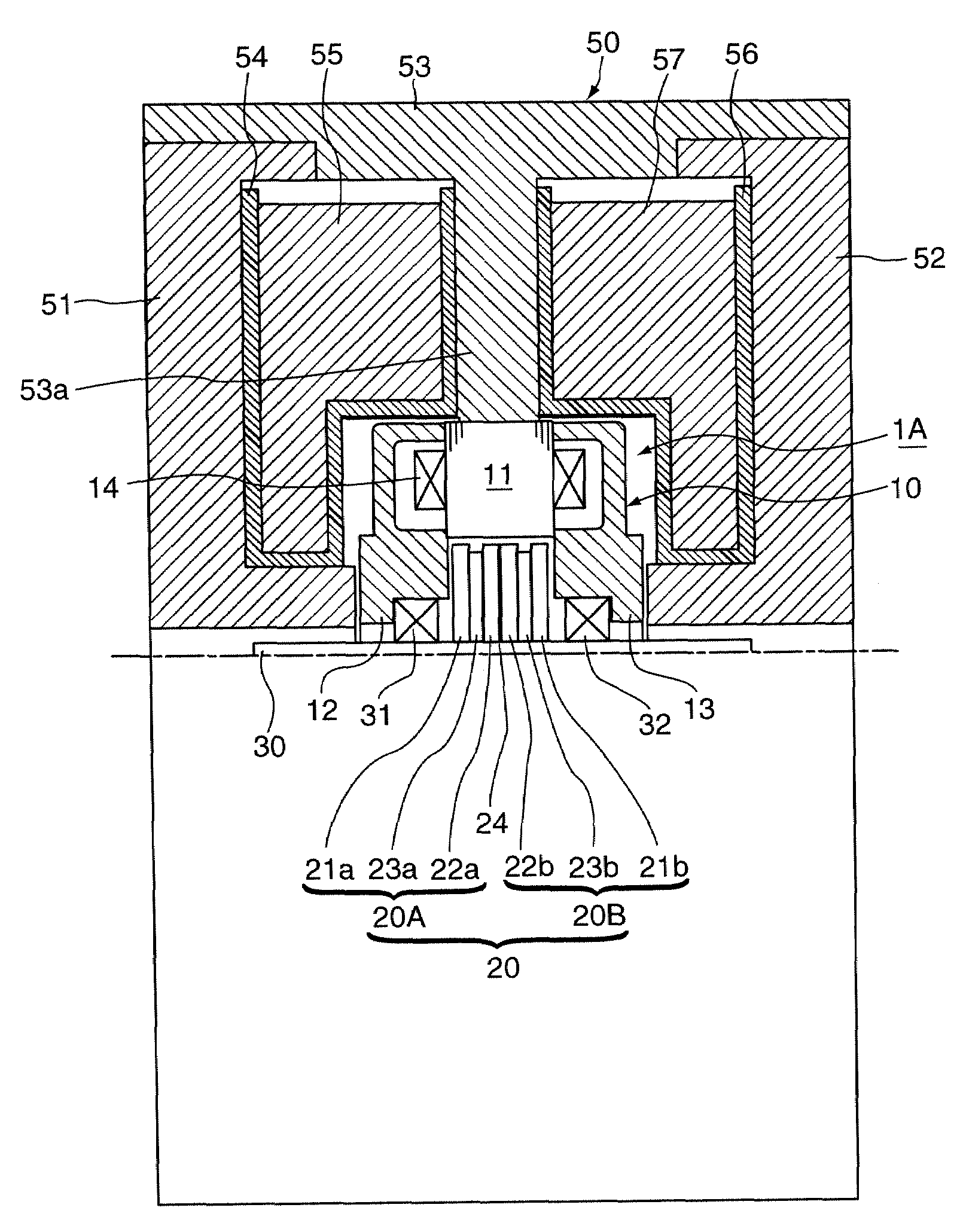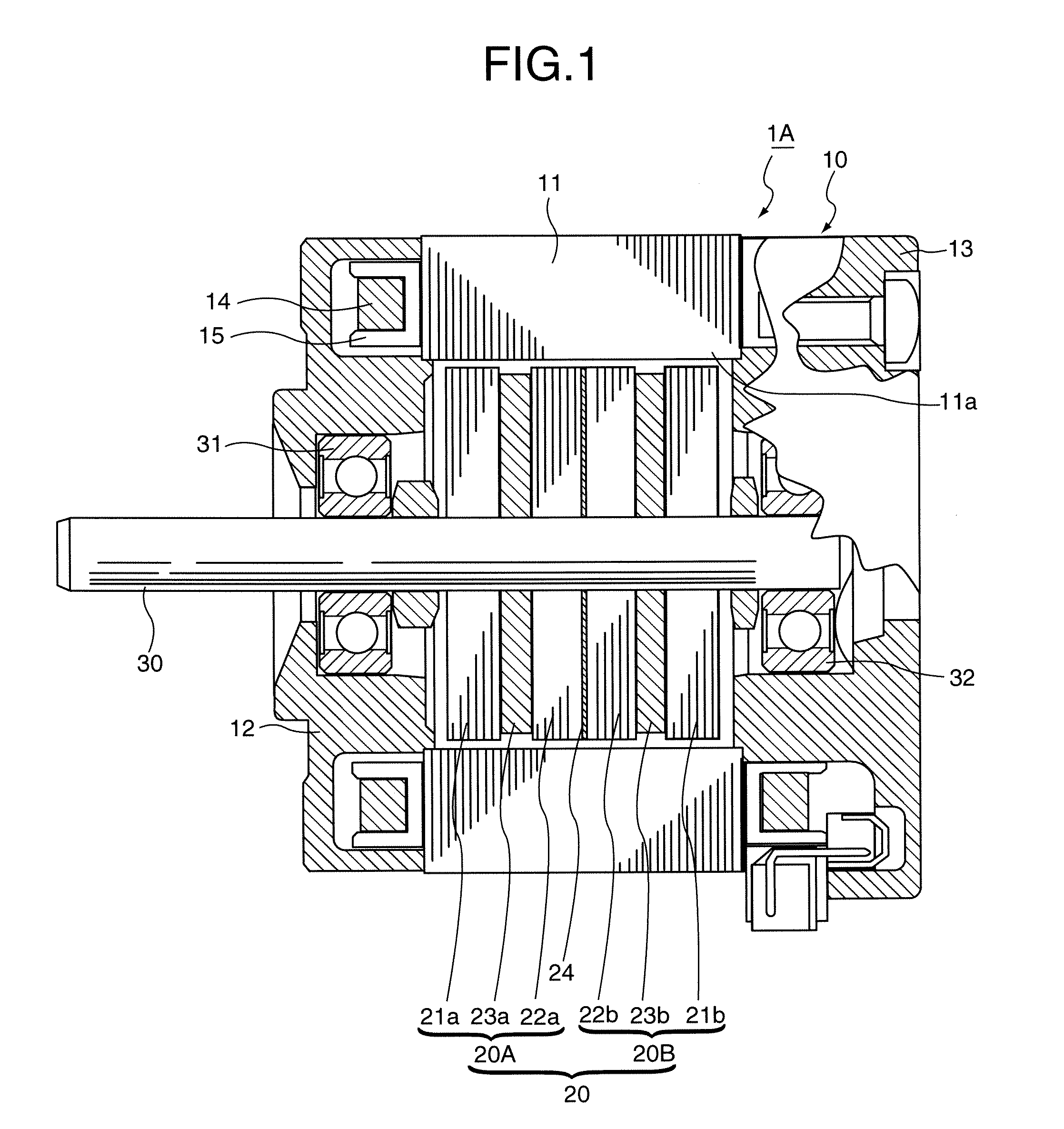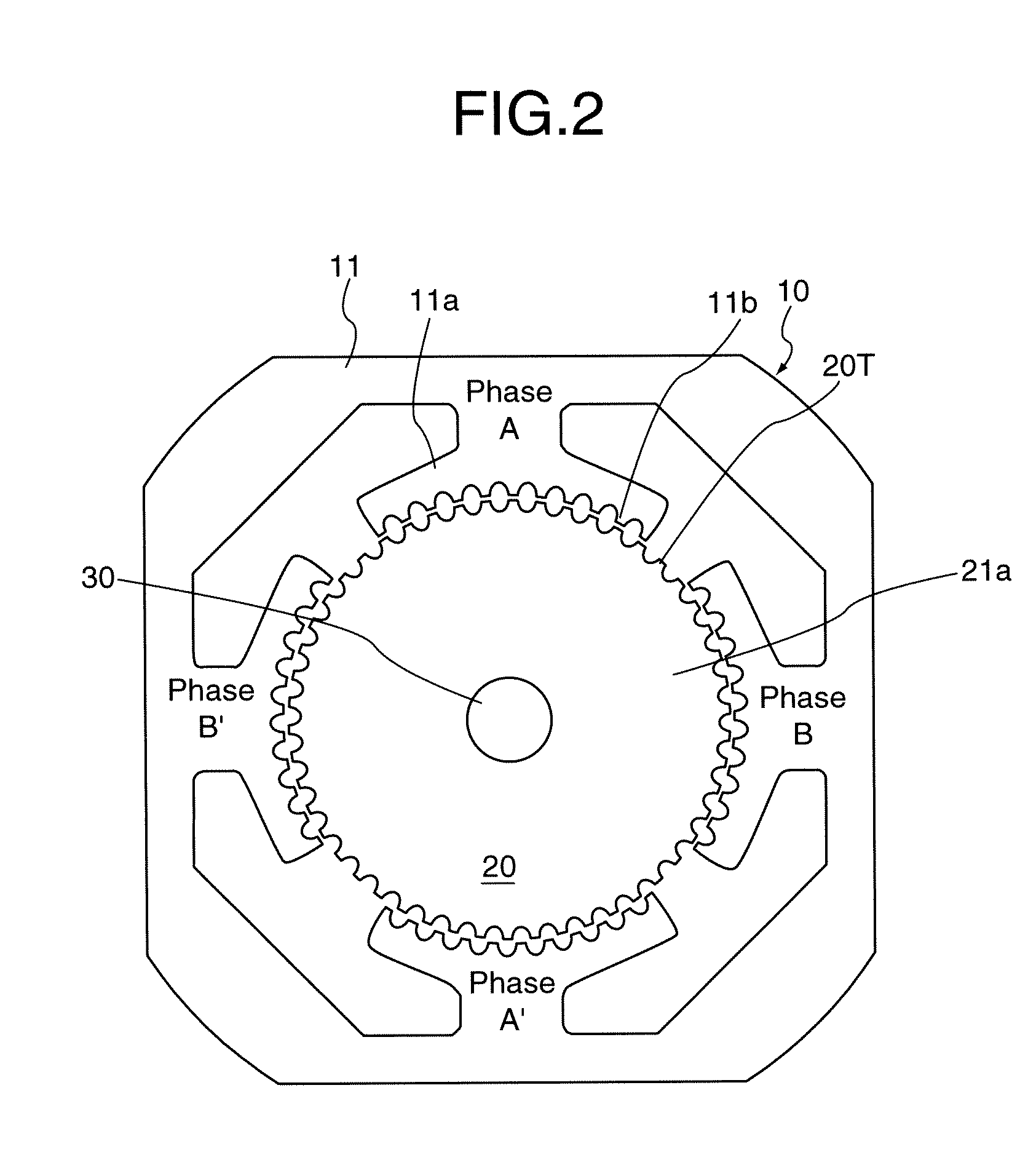Hybrid permanent magnet type electric rotating machine and manufacturing method thereof
a permanent magnet type, electric rotating machine technology, applied in the direction of magnetism, instruments, horology, etc., can solve the problems of affecting the overall generating vibration and noise, and deteriorating positioning accuracy, so as to reduce the total cost of the electric rotating machine, reduce the total cost, and reduce the effect of electric power
- Summary
- Abstract
- Description
- Claims
- Application Information
AI Technical Summary
Benefits of technology
Problems solved by technology
Method used
Image
Examples
first embodiment
[0080]In the manufacturing method of an HB permanent magnet type electric rotating machine according to the first embodiment of the present invention, the stator 10 is constructed by winding the coils 14 around the main poles 11a of the stator core 11; the rotor 20 is constructed by fixing the first rotor unit 20A, which consists of a pair of rotor cores 21a, 22a and a magnetic material 23a (hereinafter, it is described by the reference 23a that is the same as the permanent magnet after magnetization) sandwiched between the rotor cores, and the second rotor unit 20B, which consists of a pair of rotor cores 21b, 22b and a magnetic material 23b (hereinafter, it is described by the reference 23b that is the same as the permanent magnet after magnetization) sandwiched between the rotor cores; and the rotor 20 is assembled to the stator 10 with a predetermined air gap therebetween so that the rotor 20 is free to rotate by means of the first bracket 12 arranged at the outside of the first...
second embodiment
[0093]In the manufacturing method of an HB permanent magnet type electric rotating machine according to the second embodiment of the present invention, a constructed rotor is mounted on a magnetizing device to magnetize magnet materials that constitute permanent magnets of the rotor before the rotor is assembled to a stator.
[0094]Namely, as shown in FIG. 4, the rotor 20 is constructed by fixing the first rotor unit 20A, which consists of a pair of rotor cores 21a, 22a and a magnetic material 23a sandwiched between the rotor cores, and the second rotor unit 20B, which consists of a pair of rotor cores 21b, 22b and a magnetic material 23b sandwiched between the rotor cores to the rotation shaft 30. Then, the rotor 20 is mounted on the magnetizing device 60, and the magnet materials 23a and 23b are magnetized to be permanent magnets.
[0095]The magnetizing device 60 of the second embodiment is provided with a cylindrical first yoke 61 that is arranged at one side in the axial direction, ...
third embodiment
[0106]In the manufacturing method of an HB permanent magnet type electric rotating machine according to the third embodiment of the present invention, the magnet materials are magnetized after the rotor is assembled to the stator. That is identical to the first embodiment. However, the method of the third embodiment uses a magnetizing device 70 shown in FIG. 5 instead of the magnetizing device 50 used in the first embodiment.
[0107]Namely, the stator 10 is constructed by winding the coils 14 around the main poles 11a of the stator core 11; the rotor 20 is constructed by fixing the first rotor unit 20A, which consists of a pair of rotor cores 21a, 22a and a magnetic material 23a sandwiched between the rotor cores, and the second rotor unit 20B, which consists of a pair of rotor cores 21b, 22b and a magnetic material 23b sandwiched between the rotor cores to the rotation shaft 30; and the rotor 20 is assembled to the stator 10 with a predetermined air gap therebetween so that the rotor...
PUM
| Property | Measurement | Unit |
|---|---|---|
| electrical angle | aaaaa | aaaaa |
| electric conductive | aaaaa | aaaaa |
| torque | aaaaa | aaaaa |
Abstract
Description
Claims
Application Information
 Login to View More
Login to View More - R&D
- Intellectual Property
- Life Sciences
- Materials
- Tech Scout
- Unparalleled Data Quality
- Higher Quality Content
- 60% Fewer Hallucinations
Browse by: Latest US Patents, China's latest patents, Technical Efficacy Thesaurus, Application Domain, Technology Topic, Popular Technical Reports.
© 2025 PatSnap. All rights reserved.Legal|Privacy policy|Modern Slavery Act Transparency Statement|Sitemap|About US| Contact US: help@patsnap.com



